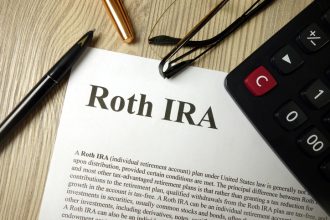Like all family and property law, divorce is a highly state-specific process. How you will handle a divorce and protect your assets, and what constitutes individual vs. shared assets, will depend entirely on your jurisdiction. As a result, how retirement accounts are treated during divorce proceeds can vary widely from state to state.
The first step is typically to separate personal from marital assets. In most cases, you retain assets and debts that predated the marriage, and you split assets and debts that you acquired while you were married. This is far more complicated than it sounds, as it’s very easy for assets to comingle and share accrued value during the course of a marriage.
For example, say that you are 55 years old with $800,000 in a 401(k). The most important part of this will be where you live and how much of the account was earned during the marriage. From there, a divorce court will typically divide up the 401(k) based on your household’s overall assets and, in particular, any other retirement accounts held by you or your spouse.
While a complete discussion of this issue is far beyond the scope of a single article, we’ll explore some of the most important factors to consider below.
Retirement Accounts and Divorce

Divorce courts typically do not give special status to a couple’s tax-advantaged retirement accounts. A judge will treat these portfolios as a standard financial asset, splitting up each account based on the overall distribution of assets, the parties’ relative financial status and an account’s marital vs. personal status, among other factors.
You can move these funds directly into another qualifying pre-tax account without triggering income taxes or an early withdrawal penalty.
For example, say that you have $800,000 in a 401(k), of which you had $300,000 in the account when you got married. Typically, you will keep that $300,000. The remaining $500,000 might be considered a marital asset and be distributed between you and your spouse. You might then agree to split that money 50/50, and draft a QDRO to remove $250,000 worth of assets from your 401(k) and move them to an account of your spouse’s choosing.
Retirement accounts may be distributed directly, with one spouse receiving the assets or their cash equivalent at the time of divorce. Assets can also be shared in retirement, with each spouse taking income or distributions according to the terms of their divorce. This is most common with a more structured retirement asset, like an annuity or a pension, which can be difficult to split apart.
Whether you’re just starting the divorce proceedings or have completed them, a financial advisor can help you set and plan for new financial goals given this major life change.
Community vs. Equity States
There are two main ways that states deal with divorce assets: community or equity.
Community property has become increasingly disfavored, so relatively few states (nine in total) still practice it. Under this scheme, a court will order marital assets split evenly between the spouses upon divorce, with each spouse taking half. Here, for example, under a community property scheme a court would simply give each spouse 50% of the marital component of the 401(k).
Equity, or “equitable distribution,” is increasingly the standard model. Under this approach, courts will attempt to distribute divorce assets equitably, not necessarily evenly. The court will consider several factors including (but not limited to) length of the marriage, child custody arrangements, work and careers, financial and personal contributions to the marriage, earnings potential, and in some cases, fault and bad actions.
In the case of a retirement fund, a court might also consider issues like age of spouses (who has more time to save up), future Social Security benefits of each spouse, and other retirement assets held by each spouse. For example, if you are 55 and your spouse is 45, the court might give you more of the 401(k)’s assets since you have less time remaining until retirement. On the other hand, if you hold $800,000 in your 401(k) and your spouse has $750,000 in theirs, a court might transfer few (if any) assets between two similarly-situated parties.
Whether you live in a community property or equitable distribution state, a financial advisor can help you consolidate the assets you receive in a divorce and construct a comprehensive financial plan around them.
Protecting Your Assets and Tax Status

The truth is, there are few legitimate ways to protect your marital assets from divorce proceedings. Much advice on this subject shades on illegality, since trying to hide your assets or obscure their marital history may constitute fraud. As a result, most advice to move your assets or change their tax status is at best unhelpful, at worst legally suspect.
Some advice recommends that you stop contributing to a 401(k) during divorce proceedings. While this will (modestly) reduce the gains that your spouse can claim, it will equivalently reduce your own gains, and will not change the distribution of the underlying cash.
While a financial advisor can be a valuable resource during a divorce, there are a few basic steps you can take:
1. Establish Your Own Bank Accounts
First, once divorce begins, establish your own bank accounts. Cash flow will be critical. You will need to pay legal bills, establish your own household, begin building a separate credit history and more. You also may want to buy your spouse out of their share of the retirement portfolio. For example, say that you hold an $800,000 401(k) based on stock options from your employer. You might want to keep those assets invested. In that case, you might want to accrue cash so that you can pay your spouse the equivalent value for their share of the 401(k), trading the cash for the more-valuable portfolio assets.
Although your spouse may choose to decline your offer if they also prefer the long-term value assets.
2. Prevent Your Spouse from Cashing Out 401(k)
You’ll also want to immediately speak with your divorce attorney and 401(k) plan administrator. It is not uncommon in divorce proceedings for spouses to attempt to sell, move or spend assets. In some cases, this is an effort to disrupt the proceedings, for example by converting identifiable securities into obscure personal property. In other cases, it is simply an attempt to destroy or devalue shared assets out of spite.
Regardless of the purpose, you want to address this up front. It’s far easier to prevent your spouse from cashing out the 401(k) than to try and claw that money back.
3. Collect and Create Explicit Records
You want know exactly what you own and where. Clearly document any financial transactions that you make and pay attention to any conducted by your spouse. This paperwork includes addressing the beneficiaries on all policies, like your 401(k) and life insurance. You don’t want your spouse to retain authority or rights under those accounts, regardless of how they’re divided up.
4. Be Mindful of the Tax Status of Assets
Finally, pay attention to the tax status of your settled assets. For example, say that you have an $800,000 Roth IRA in addition to your $800,000 401(k). Don’t accept a divorce settlement that treats those as equivalently valuable assets, because the Roth account likely has far more value than the other. Make sure that you and your lawyer insist on treating your 401(k) as the pre-tax asset it is, and not the $800,000 asset it appears to be.
Bottom Line
Protecting your assets during a divorce is difficult, because as far as the law is concerned they aren’t your assets. They belong equally to your spouse. But you can put yourself in a better position by remembering to track your money and valuing it for its long-term, after-tax value.
Financial Tips for Divorce
- Getting a divorce is stressful and painful, especially since it involves some of the most complex financial transactions any household will conduct. While it’s important to have legal and financial professionals there to help you through the process, you should also understand exactly what goes into it.
- Finding a financial advisor doesn’t have to be hard. SmartAsset’s free tool matches you with up to three vetted financial advisors who serve your area, and you can have a free introductory call with your advisor matches to decide which one you feel is right for you. If you’re ready to find an advisor who can help you achieve your financial goals, get started now.
Photo credit: ©iStock.com/Jacob Wackerhausen, ©iStock.com/Vimvertigo, ©iStock.com/Rawf8
Read the full article here
















